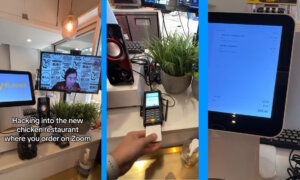If there is a good thing to be learned from a pandemic, it is the fact that office hours advocates, as we used to know them, are standing on some moot points right now. No one can tell you, in the middle of a pandemic, that you can’t do your work from home if the nature of your job allows that. But office hours are over! At least in the way that we used to acknowledge them in the past, in the form they used to be before the coronavirus pandemic.
This global tragedy taught us to adapt in ways we didn’t know we could before.
Some of us even discovered how to make banana bread and motivational speeches on TikTok. But for companies, it was a do or die moment. With the workforce so spread out, some of them commuting to reach the workplace, and a global pandemic going around, the companies did the unthinkable. They said to all the workers that what they all knew to be true for some time now is, in fact, correct. They can now work from home with the same pay, just please come to work and don’t make a fool of yourself on Zoom.
Some of us work behind a desk and a computer screen.
This advantage of teleworking and internet access has given us the edge to blaze through this dire time. And prove to The Man that we can work from home, in undies or the attire of our choice, more efficiently than at the office.
You wanna know why? Because we don’t spend the morning trying to get to work on time. We get our coffee from our own coffee machine, not from the stand around the corner. We don’t stress about what could happen along the way to work and back.
From home, we go into work mode more relaxed. It’s our domain, our castle, our fortress, and we get to defend it and earn some gold at the same time.
Recent studies show that work from home is beneficial
A report from research firm Valoir found that the sudden transition to working from home has only had a 1 percent reduction in work productivity. Further, more than 40 percent of workers would prefer to work remotely full time in the future. A 2-Year Stanford study shows the astonishing productivity boost working from home can have. These are only a few studies that attest that working from home is a viable solution to implement into your company to cut costs and raise productivity.
An average workday is around nine to ten hours, with an estimated start time of seven or eight AM and a common end time of six or seven PM. Most people are working during normal work hours, with fewer than 10 percent starting before 7 AM or extending their workday beyond 7 PM.
Why stress your worker with transit hours, that they have to maintain, physically and financially, when you can just give them an encrypted company machine that will cost less than the office space you rent?
If work from home and office hours politics relax, a company can enjoy concrete benefits.
The company will need an office to entertain and receive potential clients or partners, but you do not need all the workforce behind a glass window, to show the numbers in your army. Last time I checked, most CEOs are not Genghis Khan.
Some companies can’t do this at the moment, or they don’t have the computing power to make such a concept possible. The first step is the relaxation of office hours. Make a program that works for the company and the workforce. Stand by it and try to improve it. Make investments in the automatization and improvement of the work from home initiative. Hear out what the workforce has to say about the situation. And try to see where the company can reduce costs and where it can divert funds to the new program.
Some unforeseen aspects of working from home
With some work put into this concept, commuting to the office or waking up at five AM to get to work, should be a thing of the past for a segment of the workforce. The same workforce needs to work on dedicating their time to work, not to other distractions.
Office hours mean that you need to keep your game face on. At home, things change and you tend to let your guard down and be more relaxed because you are in your element. And relaxation means distraction, in most cases. Social media and children are the most distracting aspects of working from home, with other people in your life coming in a close third in the battle of daily distractions from work.
Distractions from the workspace
You can’t completely isolate yourself from these. Maybe you can block social media sites on your Wi-Fi router for the duration of your workday. But you can’t ignore your family and friends. Complications like the ones above usually lead to one thing: more working hours for the employee. Depending on the task and the resources allocated, a worker may spend sometimes up to 11 hours doing work-related tasks.
With a new work jungle, new rules have to be implemented for the system to hold up. Workers need to set fixed work hours and breaks, they need to try to be indifferent to daily distractions. There are two sides to every coin. Some compromises have to be made so that office hours politics change for the better. And it seems that it has been working during the pandemic time.
There is also the psychological factor that the worker and the employee have to consider. Low morale and even slacking can be a problem. A system to index workers is necessary. One that is set in stone and never altered after the fact, where tasks are indexed immediately after they are done. But for this to work we need investments in machine learning, applied sciences, maybe augmented reality. The worker needs to know what he does while he’s doing it so he can keep motivated and focused.
Let tracking and productivity apps help you
The implementation of tracking and productivity apps for a remote worker is imperative. Time tracking apps are a time management tool that can help the worker and employer become more organized, efficient, and get more things done. Depending on the needs of the company, the app needs to have a few features like monitoring, GPS tracking, invoicing, or just indexing regular work hours behind a monitor. DeskTime is a good example of a productivity app. A simple-to-use employee monitoring, project management, and productivity analysis tool. The Hours app is also a good example in the same category. For large scale projects, there is Tick.
Depending on the budget and what kind of job the worker needs to do, some options may be cheaper or even free. Zoom is a good option. Even Skype for team meetings. Asana and Trello offer good alternatives for lower budgets. The market is so diverse and so populated in the sector of productivity and tracking apps, that it would be criminal not to look into it and see if there is a way to use these apps to maximize profits and lower production costs.
Things are about to change for the better
Middle management needs to admit they lost this fight and tell workers that they can work remotely. Office hours and the way we perceive work is about to change thanks to a global pandemic. Workplace flexibility should be the main focus of companies. The managers benefit because they can spend less of their time advertising, recruiting, training, and promoting. The workers are more relaxed working from home. Managers don’t have to spend so much time recruiting and training people on site. Firms can generate more profit. There are even clear benefits for the society we live in, like reducing excess traffic, driving times, and, ultimately, pollution.
Follow TechTheLead on Google News to get the news first.



























